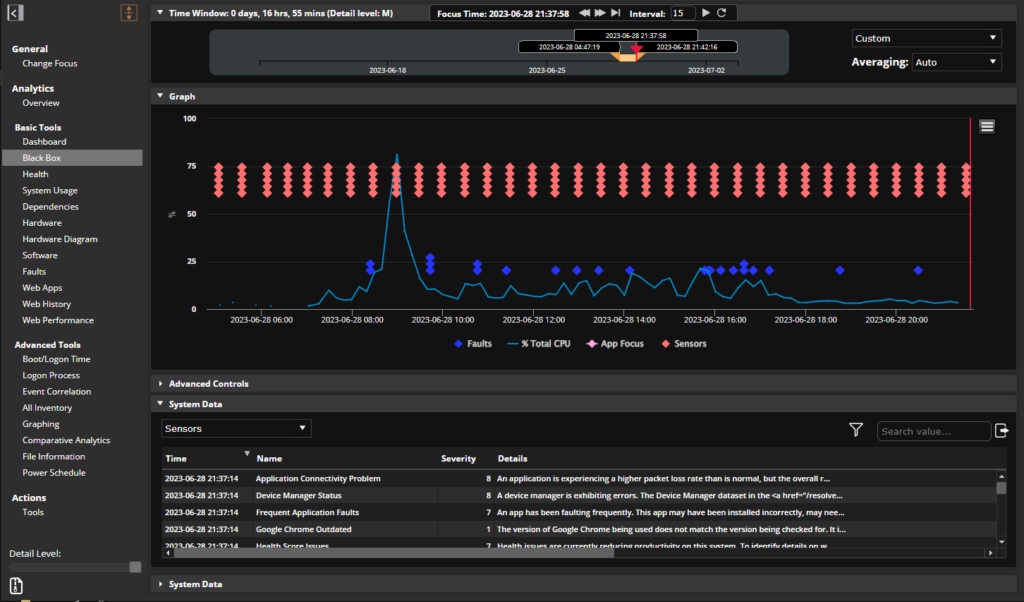
While we live in an age of interconnectivity where the answer to almost anything seems just a few clicks away, the sheer volume of available data and information can quickly obscure our attempts to find meaning. In IT, operations teams have found a solution for addressing the ever-expanding web of digital events that affect users: event correlation and analysis (ECA).
IT Event Correlation and Analysis Isn’t a New Concept
In fact, it existed as a Magic Quadrant until Gartner retired it in 2011, stating, “New technologies are influencing and fundamentally reshaping what has been known as the IT event correlation and analysis market.”
Setting aside the “new technologies” piece for a moment, it is important to note that there is still value in the “traditional” ECA approach. If IT operations attempted to resolve every event and alarm within their environment, enterprises would need to employ round-the-clock cyborgs to keep pace with the rapidity of triggered events. Instead, we have smarter and less expensive ways of responding to problems in the environment. Three main strategies include:
- Reducing the number of events by preventing or automatically eliminating duplicates
- Filtering events to prioritize IT actions according to business needs
- Root cause analysis: treating the source of a problem (rather than its symptoms) to prevent recurrence
The goal of ECA has always been to expedite (and, where possible, automate) problem resolution and to align IT support with business values.
What’s Changed?
We’ve apparently grown fonder of acronyms. The evolutions of BYOD, SaaS, and IoT have contributed to the consumerization of IT, which has pros and cons for IT teams:
- Pros:
- Reduced application delivery and maintenance
- External service providers contributing more support than ever before
- Cons:
- Reduced visibility
- Increased demand on network resources due to delivery from the cloud
A reduction in visibility is a big problem for traditional ECA. For example, imagine a situation where a user spends half the week working from home. Obviously, this person will be off-network during that time, meaning that any issues they experience will not be captured by traditional ECA tools. However, if that user’s laptop had an endpoint agent installed that was continuously capturing data and logging event history even when off-network, as soon as the user came back into the office, IT would have access to any alarms/events that occurred on that device while the user was mobile.
But this scenario alone won’t help IT through another major pitfall of traditional ECA tools. Horse ebooks put it best:
Everything happens so much
— Horse ebooks (@Horse_ebooks) June 28, 2012
Even with ECA tools filtering and prioritizing events, there is still so much happening in the environment. How can IT cut through the clutter to focus on actions that will improve the experience of end users?
Re-envisioning IT Event Correlation and Analysis
There is one metric above all others that can unify and focus IT efforts: quantified end-user experience. By measuring and recording the end-user experience as a component of digital experience monitoring, IT operations can regain visibility into their environment and use fluctuations in end-user experience to target support where it’s needed most.
A sudden dip in end-user experience is a tip-off for IT. Whether responding in real time before a user notices an issue or addressing a service desk ticket, IT can look for alarms and events that occurred at the same time that end-user experience declined.
This kind of intelligent event correlation can even help IT better monitor SaaS applications. Cloud-delivered patches and updates occur for the most part at the discretion of the service provider. With ECA and end-user experience scoring, it is possible to trace a decrease in experience back to a SaaS update and from there roll the user back and contact the service provider to resolve the issue.
As we’ve discussed before, scoring and trending the end-user experience presents a whole host of benefits for an enterprise, including: validating desktop transformation success, harmonizing your resource stack, and monitoring service level agreements. By re-envisioning ECA to include the user perspective, IT can provide more impactful support that enhances users’ interactions with the technology they need to get work done.
Subscribe to the Lakeside Newsletter
Receive platform tips, release updates, news and more



